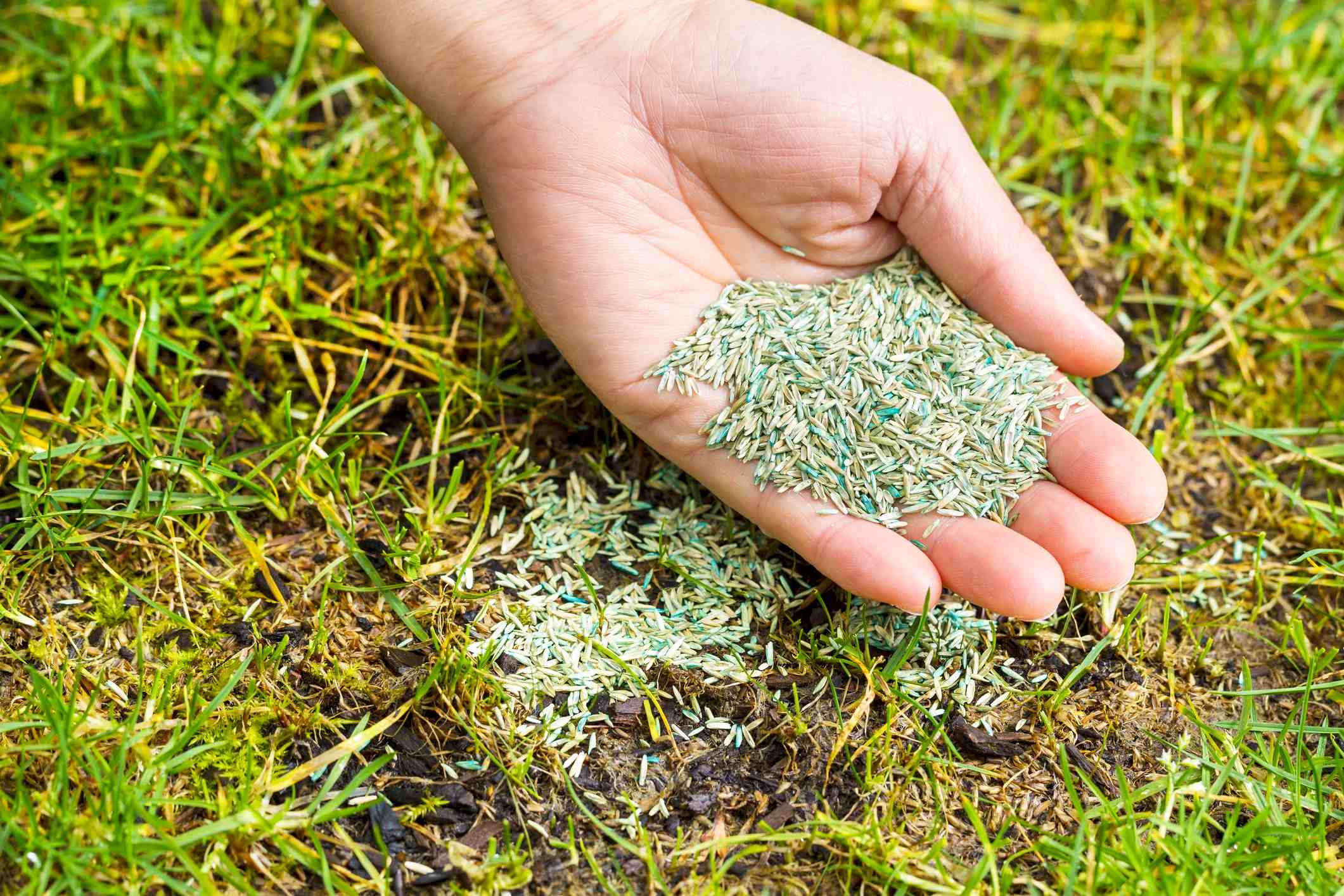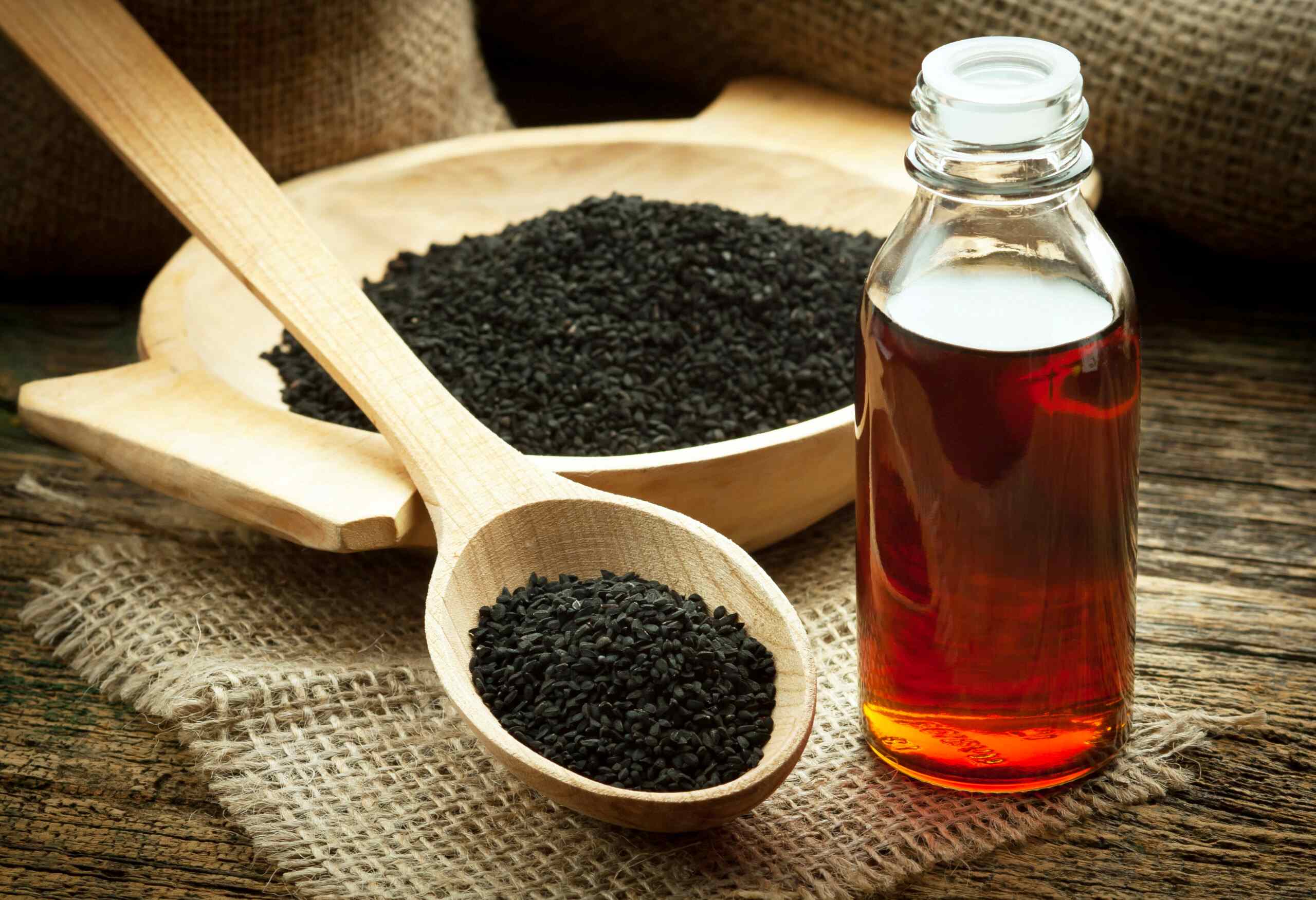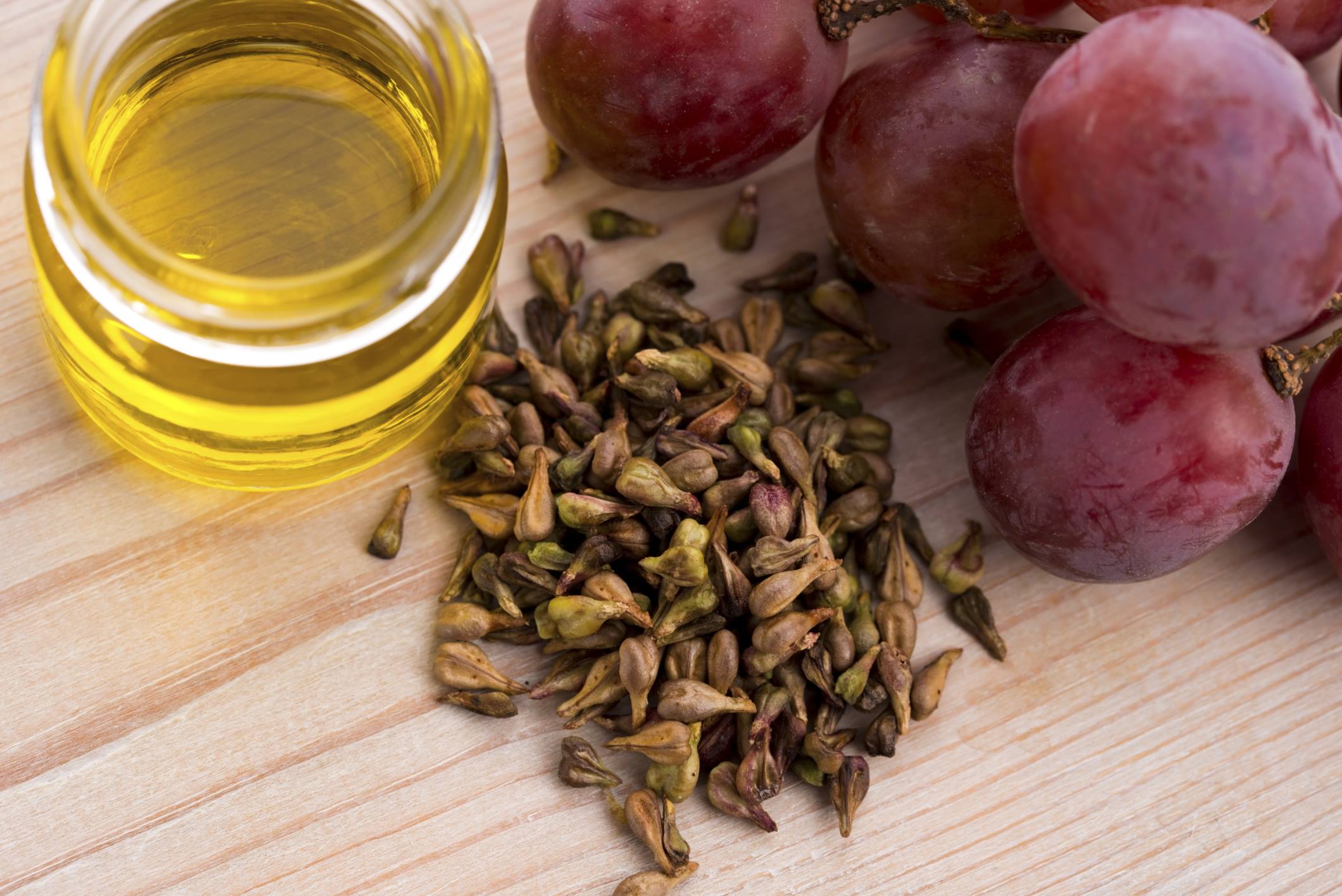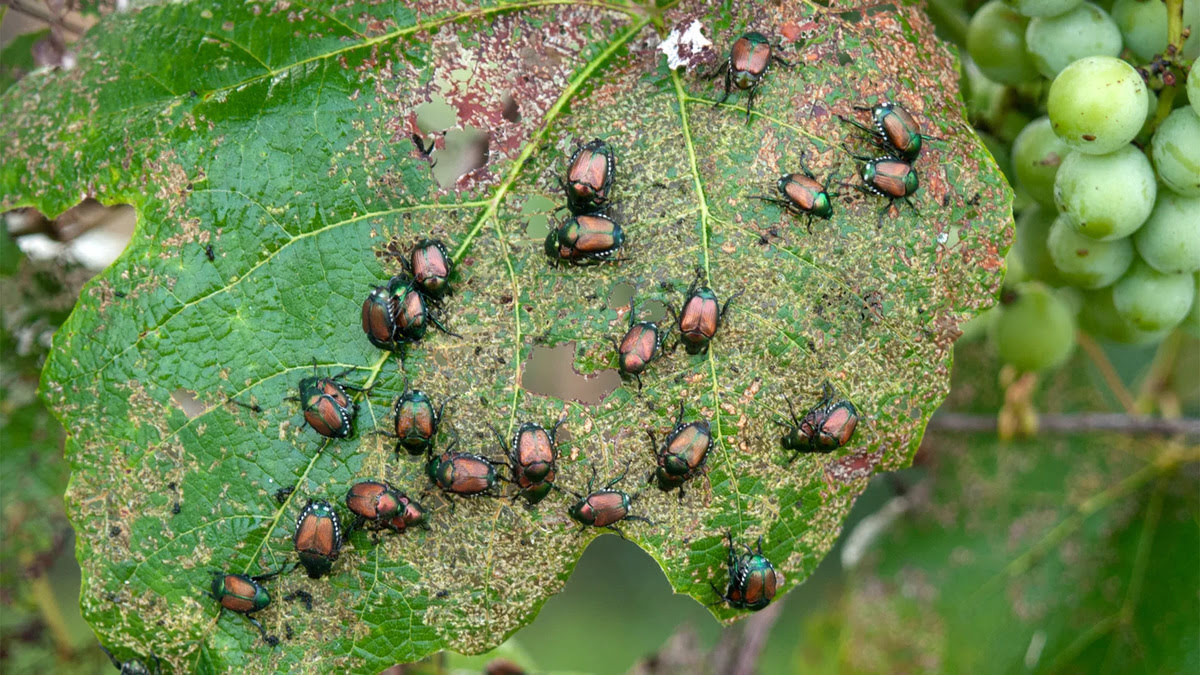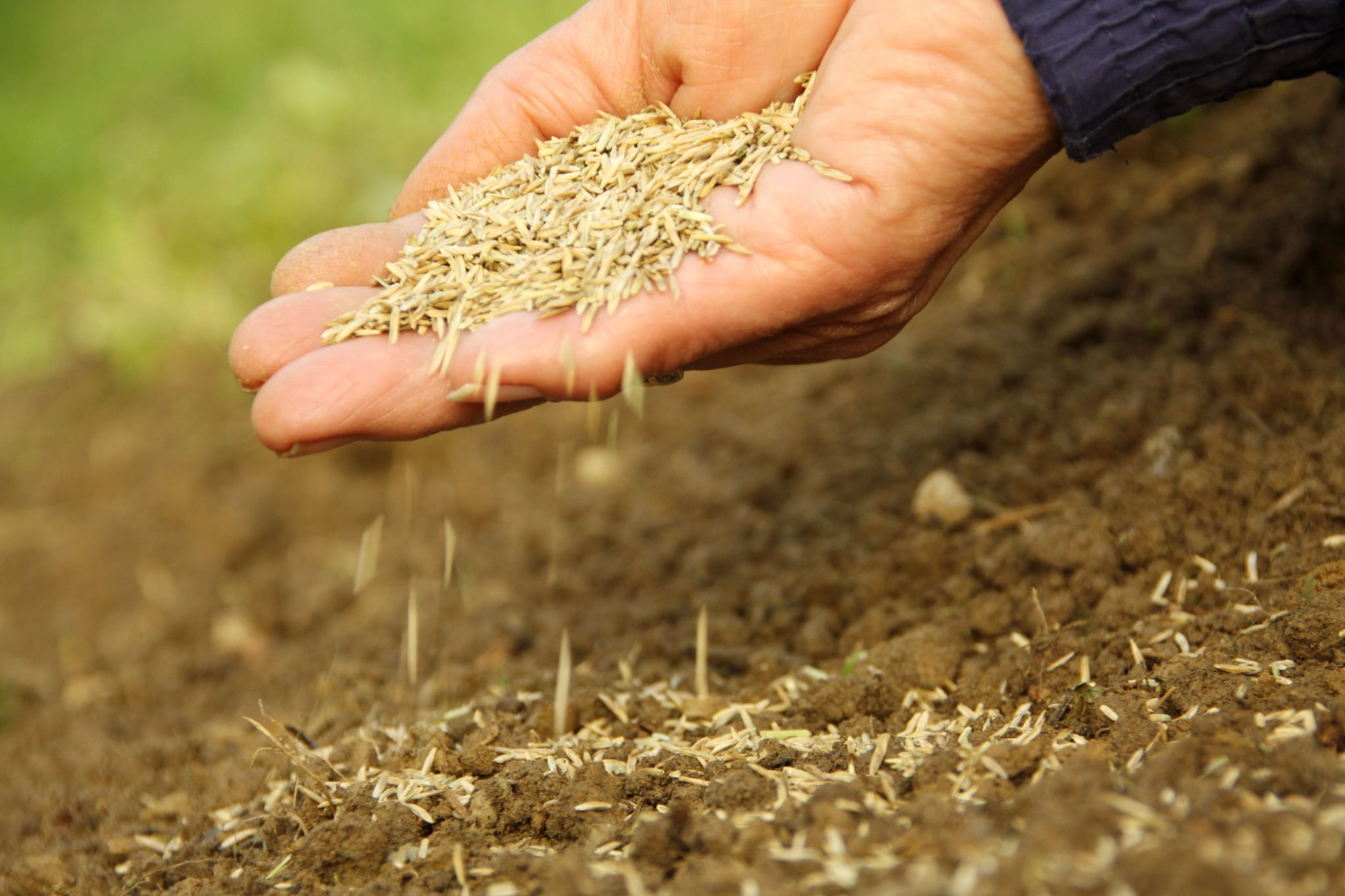Home>Gardening Tips and Tricks>Problem Solving>How To Stop Birds From Eating Grass Seeds
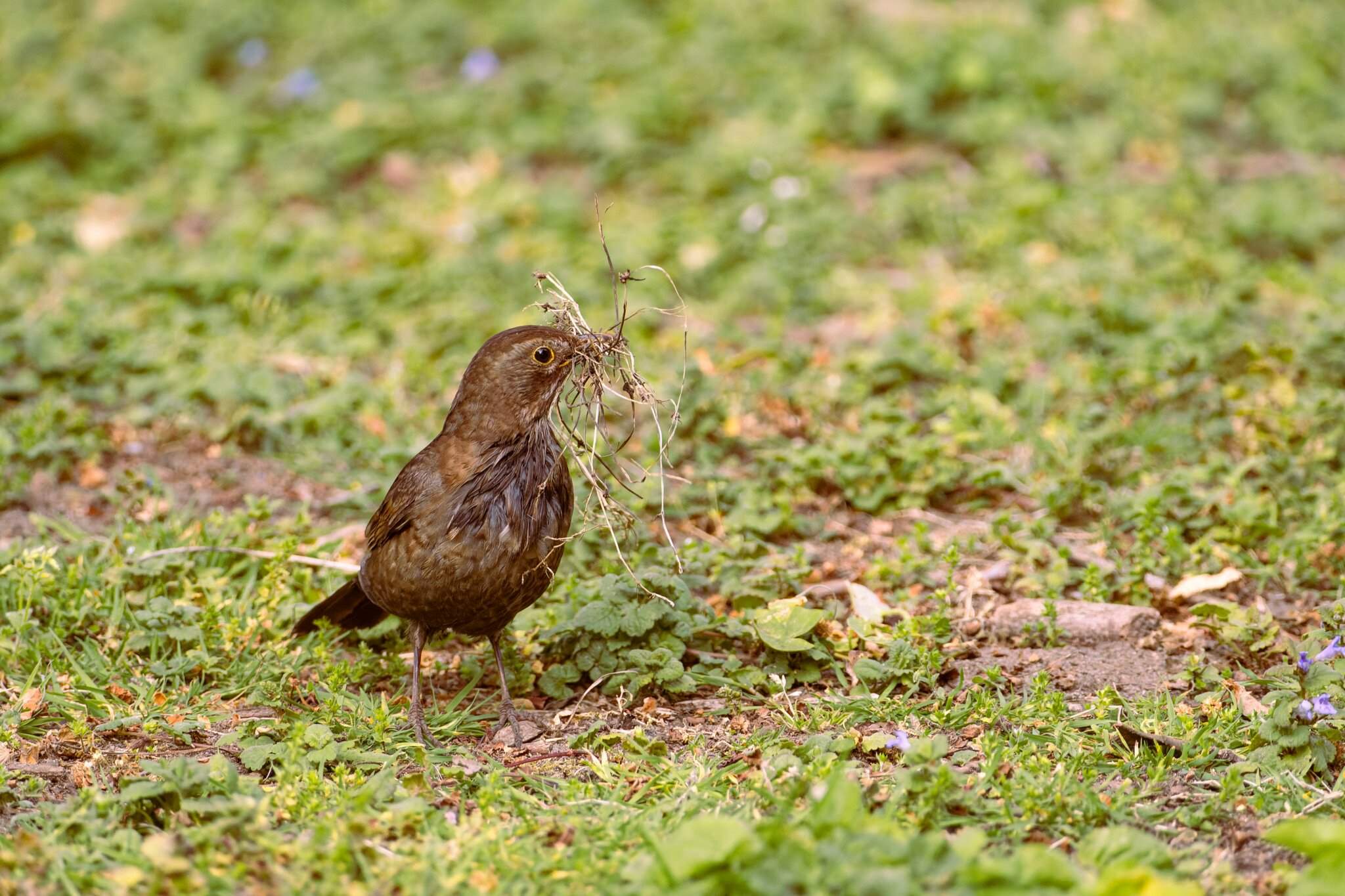

Problem Solving
How To Stop Birds From Eating Grass Seeds
Modified: January 22, 2024
Looking for solutions to prevent birds from devouring your grass seeds? Our guide on problem-solving techniques will help you keep your lawn flourishing.
(Many of the links in this article redirect to a specific reviewed product. Your purchase of these products through affiliate links helps to generate commission for Chicagolandgardening.com, at no extra cost. Learn more)
Table of Contents
Introduction
Welcome to our comprehensive guide on how to stop birds from eating grass seeds. Many homeowners and garden enthusiasts often find themselves frustrated when birds swoop down and feast on the seeds they’ve carefully sown. Birds can cause significant damage to lawns and gardens, resulting in patchy and barren spots. Fortunately, there are effective methods to deter birds and safeguard your grass seeds.
Understanding bird behavior is key to devising a successful plan to protect your grass seeds. Different bird species have unique feeding habits and preferences, which can help you tailor your approach. From robins and sparrows to blackbirds and finches, we will cover the common species that are known to munch on grass seeds.
It’s important to recognize the impact that birds can have on your lawn and garden. While they play a vital role in the ecosystem, their feeding habits can hinder the growth and development of your grass. We will explore the potential consequences of birds eating grass seeds, including patchy growth, loss of nutrients, and reduced germination rates.
In this guide, we will discuss natural methods to deter birds from feasting on your grass seeds. These techniques involve creating a less appealing environment for birds by introducing certain deterrents or modifying their feeding patterns. Additionally, we will explore the option of installing physical barriers to prevent birds from accessing the seeds altogether.
Aside from deterring birds, we will also discuss the alternative approach of attracting birds to designated feeding areas away from your lawn or garden. By providing alternative food sources, you can help keep birds at bay while still creating a welcoming environment for them.
By the end of this guide, you will have a thorough understanding of the various methods and techniques available to protect your grass seeds from birds. So, let’s dive in and discover how you can preserve the beauty of your lawn and garden while respecting nature’s feathered friends.
Understanding Bird Behavior
Before implementing any bird deterrent strategies, it’s important to have a basic understanding of bird behavior. Different bird species have unique feeding habits and preferences, which can help you devise an effective plan to protect your grass seeds.
Birds are opportunistic feeders, and their diet varies depending on the species and the availability of food sources. When it comes to grass seeds, certain birds have a particular fondness for them. For example, robins are known to enjoy feasting on earthworms and insects but may also indulge in grass seeds if they’re readily available.
Understanding the feeding patterns of common bird species can help you anticipate potential conflicts with your grass seeds. Sparrows, for instance, have a diverse diet that includes grass seeds, fruits, and insects. They are notorious for their ability to extract seeds from the ground, making them a common culprit in seed consumption.
The size and shape of a bird’s beak can also determine its preferences when it comes to food. Finches, with their small and pointed beaks, are well-equipped to extract tiny seeds from grass and weeds. Blackbirds, on the other hand, have a broader beak that allows them to probe deeper into the soil in search of larger seeds. This knowledge can help you identify the bird species that are likely to target your grass seeds.
Birds are also attracted to areas with easy access to food and water. If your lawn or garden is located near bird feeders, bird baths, or fruit-bearing trees, you may notice increased bird activity and potential seed consumption. Taking note of these factors can assist you in addressing the problem at its source.
Finally, it’s worth noting that bird behavior can vary depending on the time of year. During nesting season, birds tend to be more territorial and may aggressively defend their feeding areas, including your grass seeds. Understanding these seasonal variations can help you implement more targeted strategies to deter birds.
By familiarizing yourself with bird behavior, you’ll be better equipped to implement strategies and techniques that discourage birds from feasting on your grass seeds. In the following sections, we will explore natural methods, physical barriers, and repellents that can help protect your lawn and garden.
Common Species of Birds That Eat Grass Seeds
When it comes to protecting your grass seeds, it’s essential to be familiar with the common bird species that have a penchant for feasting on them. By understanding these species and their feeding habits, you can devise targeted strategies to deter them effectively.
1. Sparrows: Sparrows, such as House Sparrows and Song Sparrows, are notorious for their seed-eating habits. These small birds have a diverse diet that includes grass seeds, fruits, and insects. They are particularly adept at extracting seeds from the ground, making them a common culprit in seed consumption. Sparrows can quickly empty bird feeders and cause damage to newly sown grass seeds.
2. Robins: While robins are known for their love of earthworms and insects, they will also indulge in grass seeds if they’re readily available. These medium-sized birds have a distinct red-orange breast and are often seen hopping around lawns in search of food. Robins can be attracted to freshly sown grass seeds, causing patchy growth and potential damage to your lawn.
3. Finches: Finches, such as House Finches and Goldfinches, have small and pointed beaks that are well-suited for extracting tiny seeds from grass and weeds. These colorful and lively birds are known to feed on a variety of seeds and can easily target your grass seeds if they perceive them as a food source.
4. Blackbirds: Blackbirds, including Red-winged Blackbirds and Common blackbirds, have a broader beak that allows them to probe deeper into the soil in search of larger seeds. These opportunistic feeders can cause damage to lawns and gardens by plucking out and consuming grass seeds. They are often attracted to open areas where they can forage easily.
5. Pigeons: Pigeons, also known as Rock Doves, are common visitors in urban and suburban areas. They have a varied diet that includes grains and seeds, making your freshly sown grass seeds an enticing meal. Pigeon populations can quickly multiply and become a challenge to manage if left unchecked.
6. Crows: Crows are intelligent and adaptable birds that can cause significant damage to lawns and gardens. While they primarily feed on insects, fruits, and nuts, they will readily consume grass seeds if they come across them. Crows are known to be persistent feeders and can quickly make a meal out of a freshly sown lawn.
By familiarizing yourself with these common bird species, you can identify potential threats to your grass seeds and take appropriate measures to deter them. In the following sections, we will explore effective methods to protect your lawn and garden from bird feeding activities.
The Impact of Birds Eating Grass Seeds
The presence of birds that feed on grass seeds can have various negative impacts on the health and appearance of your lawn and garden. It’s important to understand these consequences to appreciate the need for effective bird deterrent strategies.
1. Patchy Growth: Birds can cause patchy growth in your lawn by plucking out or consuming grass seeds. This can result in uneven coverage and an aesthetically unpleasing appearance. Patchy growth also creates opportunities for weeds to take hold and compete with your desired grass species.
2. Loss of Nutrients: Grass seeds are packed with essential nutrients that promote healthy growth. When birds consume these seeds, the valuable nutrients are taken away from your lawn, hindering its overall health and vigor. This can lead to weaker grass and increased susceptibility to diseases and pests.
3. Reduced Germination Rates: Birds feeding on grass seeds can significantly reduce germination rates. The constant disturbance caused by birds pecking at the seeds can disrupt the germination process, resulting in fewer seeds successfully sprouting. This means lower overall grass density and coverage in your lawn.
4. Time and Effort: Planting grass seeds requires time and effort, from preparing the soil to carefully sowing the seeds. When birds feast on these seeds, it not only diminishes the results of your hard work but also creates the need for additional reseeding, which can be time-consuming and costly.
5. Increased Maintenance: Dealing with the aftermath of bird feeding can lead to increased maintenance tasks for your lawn and garden. Patchy areas may require additional watering, fertilization, and overseeding to restore the grass density. This can contribute to higher maintenance costs and added frustration in achieving a lush and healthy lawn.
It’s worth noting that while birds can pose challenges for maintaining healthy grass growth, they also play important ecological roles. Birds aid in insect control and pollination, contributing to a balanced ecosystem. Therefore, striking a balance between bird deterrence and providing a habitat that supports the overall well-being of avian species is essential.
By implementing effective bird deterrent strategies, you can help protect your grass seeds, maintain a healthy lawn, and create an environment that supports both the beauty of your garden and the ecological balance.
Natural Methods to Deter Birds from Eating Grass Seeds
When it comes to deterring birds from feasting on your grass seeds, there are several natural methods you can employ. These methods focus on creating an environment that birds find less appealing for feeding, without causing harm to the birds or the environment. Here are some effective strategies to consider:
1. Scare Tactics: Birds are often startled by sudden movements and loud noises. Installing visual deterrents like reflective tape, scarecrows, or wind chimes can help scare birds away from your grass seeds. Additionally, using noise deterrents such as wind-spinners or low-volume audio recordings of predator calls can create an environment that birds perceive as unsafe for feeding.
2. Physical Obstacles: Creating physical barriers can prevent birds from accessing your grass seeds. One effective method is placing a layer of lightweight bird netting over the seeded area. The netting allows sunlight and moisture to reach the seeds while keeping birds from reaching them. Ensure the netting is properly secured to prevent birds from getting entangled.
3. Natural Predators: Birds are wary of predators. By attracting natural predators to your garden, you can discourage bird activity around your grass seeds. Installing birdhouses or perches to attract owls, hawks, or falcons can create a predator-friendly environment that birds will want to avoid. However, it’s important to research local regulations and ensure these predatory birds won’t cause harm to other wildlife or pets.
4. Repellent Plants: Some plant species have scents or tastes that birds find unappealing. Adding these repellent plants to your garden bed can help deter birds from visiting the area. Examples include marigolds, lavender, rosemary, or mint. Planting these around the perimeter of your grass seed area can create a natural bird deterrent.
5. Distraction Feeding: Birds are more likely to stay away from your grass seeds if they have alternative food sources available. Set up bird feeders stocked with sunflower seeds, millet, or suet away from your grass seed area to divert their attention. By providing an attractive alternative, birds will be less inclined to search for food in your seeded area.
6. Water Features: Birds need water for drinking and bathing, but they are less likely to forage for seeds close to water sources. Installing a bird bath or shallow container of water away from your grass seed area can help redirect bird activity. Ensure the water is fresh and clean to attract birds.
Remember, combining multiple deterrent methods can increase effectiveness. Rotating scare tactics, periodically changing the positioning of deterrents, and regularly maintaining the physical barriers will help ensure continued success in deterring birds from your grass seeds.
By utilizing these natural methods, you can create an environment that discourages birds from feeding on your grass seeds, while still maintaining a natural and balanced ecosystem in your garden.
Installing Physical Barriers
When it comes to protecting your grass seeds from birds, installing physical barriers is an effective strategy that creates a physical obstacle between the birds and the seeds. These barriers prevent birds from accessing the seeds, ensuring that they remain undisturbed for optimal germination and growth. Here are some key physical barriers you can consider:
1. Bird Netting: One of the most common and effective physical barriers is bird netting. Made of lightweight mesh, bird netting creates a protective barrier that prevents birds from reaching the grass seeds. Ensure that the netting is securely fastened to avoid any gaps that birds can squeeze through. Remove the netting once the grass has established to allow for proper growth.
2. Row Covers: Row covers are often used in gardening to protect plants from pests and harsh weather conditions. They can also be utilized to safeguard newly sown grass seeds. These covers are made of lightweight fabric or plastic and are placed directly over the seeded area. Row covers allow sunlight, air, and water to reach the seeds while shielding them from bird activity.
3. Chicken Wire: Chicken wire can be an effective physical barrier for larger areas or if you’re dealing with birds that are persistent diggers. Simply lay the chicken wire over the seeded area and secure it to the ground using ground staples or landscape fabric pins. The small openings of the wire allow for proper airflow and water infiltration while deterring birds from accessing the seeds.
4. Mesh Fences: If you have a larger lawn or garden and want to protect a larger area, consider installing a mesh fence around the perimeter. Choose a mesh size that is small enough to prevent birds from squeezing through. Ensure that the fence is sturdy and properly secured to deter birds from flying over or burrowing underneath.
5. Raised Garden Beds: Creating raised garden beds can provide added protection for your grass seeds. Elevated off the ground, raised beds make it more challenging for birds to access the seeds. Ensure the sides of the beds are tall enough to prevent birds from reaching in. Consider covering the top with bird netting or row covers for added protection.
When installing physical barriers, it’s essential to consider maintenance and accessibility. Regularly inspect the barriers for any signs of damage or wear and make repairs as needed. Also, ensure that you have easy access to the seeded area for watering and maintenance tasks.
Remember, physical barriers provide a physical deterrent, but it’s essential to combine them with other methods to create a comprehensive approach to bird control. For best results, integrate the use of scare tactics or repellant plants alongside the physical barriers to create a multi-layered defense system against birds.
By installing physical barriers, you can effectively protect your grass seeds from bird feeding and ensure the best chances for successful germination and healthy growth.
Using Bird Repellents
Another effective method to deter birds from feeding on your grass seeds is the use of bird repellents. Bird repellents work by creating an unpleasant or irritating environment for birds, encouraging them to seek alternative feeding areas. Here are some common types of bird repellents you can consider:
1. Visual Repellents: Visual repellents take advantage of birds’ natural fear of predators or their instinct to avoid unfamiliar objects. Hanging reflective objects, such as CDs, aluminum foil strips, or scare tape, can create flashes of light that birds find disorienting or threatening. This visual deterrent can help keep birds away from your grass seed area.
2. Auditory Repellents: Sound-based deterrents use high-frequency noises or predator calls to discourage birds from approaching your grass seeds. Ultrasonic devices emit ultrasonic waves that are particularly irritating to birds but are inaudible to humans. Sonic devices produce loud noises or predator calls that birds perceive as a threat. Ensure that any auditory repellents comply with local regulations and are not disturbing to neighbors or other wildlife.
3. Taste Repellents: Some bird repellents rely on taste or smell to deter birds from feeding on grass seeds. These repellents contain natural or synthetic compounds that have a strong or unpleasant taste or odor to birds. They can be sprayed directly on the grass seeds or applied to surrounding areas. Always follow the instructions and recommendations provided by the repellent manufacturer to ensure safe and effective use.
4. Predatory Bird Decoys: Installing decoys of predatory birds, such as owls, hawks, or falcons, can deter smaller birds from approaching your grass seed area. Birds are instinctively wary of their natural predators and will seek safer feeding grounds. Move the decoys periodically to prevent birds from recognizing them as non-threatening objects.
5. Electronic Repellents: Electronic bird repellents use technology to emit sounds, vibrations, or flashes of light, creating an uncomfortable environment for birds. Some electronic repellents are motion-activated, detecting bird movement and triggering a deterrent response. These devices can be effective in deterring birds from your grass seeds, but ensure that they do not disturb other wildlife or pets.
It’s important to note that the effectiveness of bird repellents can vary depending on the bird species and their level of habituation. For best results, consider combining different types of repellents or rotating their use to prevent birds from becoming accustomed to a specific deterrent.
Before using any bird repellents, consider the potential impact on other wildlife and follow the instructions and guidelines provided by the manufacturer. Additionally, be mindful of local regulations that may restrict the use of certain types of bird repellents.
By utilizing bird repellents, you can create an environment that discourages birds from feeding on your grass seeds, increasing the likelihood of successful germination and growth in your lawn.
Attracting Birds to Alternative Feeding Areas
Instead of solely focusing on deterring birds from your grass seeds, another approach is to attract them to designated alternative feeding areas. By providing birds with alternative food sources, you can redirect their attention away from your grass seeds and create a win-win situation. Here are some strategies for attracting birds to alternative feeding areas:
1. Bird Feeders: Setting up bird feeders in another area of your garden can attract birds and keep them away from your grass seeds. Fill the feeders with birdseed, suet, or other bird-friendly foods that are appealing to the bird species in your area. Choose feeders that are appropriate for the types of birds you wish to attract, such as tube feeders, platform feeders, or suet feeders.
2. Bird Baths: Providing a water source in the form of a bird bath can attract birds and keep them occupied with drinking and bathing rather than foraging for seeds. Ensure the bird bath is shallow and offers a safe perch or landing spot for birds. Regularly clean and refill the bird bath to keep the water fresh and inviting.
3. Plant Native Trees and Shrubs: Planting native trees and shrubs that bear fruits, berries, or seeds can provide an abundant natural food source for birds. Research the native plants in your region that are attractive to birds and incorporate them into your garden or create a dedicated bird-friendly area. This will not only attract birds but also enhance the biodiversity of your garden.
4. Butterfly and Pollinator Gardens: Creating a garden that attracts butterflies and pollinators can also be enticing to birds. These gardens often include a variety of nectar-rich flowers, which attract both butterflies and the insects that birds feed on. By attracting insects, you create a natural food source that can divert bird attention away from your grass seeds.
5. Fruit-Bearing Trees and Shrubs: Planting fruit-bearing trees and shrubs can provide birds with an abundant and appealing food source. Consider planting apple trees, berry bushes, or fruit-bearing vines that will attract birds and keep their focus away from your grass seeds. Be prepared to share some of the fruit with your feathered visitors!
6. Provide Shelter: Birds need shelter to feel safe and secure. Planting trees, hedges, and shrubs that offer nesting sites and protection from predators can encourage birds to stay in designated areas of your garden. Providing birdhouses or nesting boxes can also entice birds to establish nests, creating a more permanent home for them away from your grass seeds.
Remember to regularly maintain and replenish the alternative feeding areas to keep them attractive to birds. Clean bird feeders, refill bird baths, and prune or replace plants as needed. Consistency is key in ensuring a steady alternative food source for the birds.
By redirecting birds to designated alternative feeding areas, you not only protect your grass seeds but also create a welcoming environment for the local avian population. Embrace the beauty of coexistence with nature’s feathered friends in your garden!
Conclusion
Protecting your grass seeds from bird feeding can be a challenging but necessary endeavor to maintain the health and appearance of your lawn and garden. By understanding bird behavior and the common species that eat grass seeds, you can tailor your approach to effectively deter them. Whether you choose natural methods, install physical barriers, use bird repellents, or attract birds to alternative feeding areas, the goal is to create an environment that discourages or redirects bird activity.
Natural methods such as scare tactics, physical barriers like bird netting or chicken wire, and the use of repellent plants can help create an unappealing environment for birds. Additionally, attracting natural predators or diversions like bird feeders, bird baths, or fruit-bearing trees can provide alternative food sources, keeping birds away from your grass seeds. Combining these strategies can further enhance their effectiveness.
It’s important to apply these methods in a humane and environmentally friendly manner, ensuring the well-being of both the birds and the ecosystem. Regular maintenance, monitoring, and adjustments may be necessary to ensure ongoing success in deterring birds from your grass seeds.
Remember that birds are an integral part of the natural ecosystem, providing benefits such as insect control and pollination. Therefore, striking a balance between bird deterrence and the overall well-being of these feathered creatures is crucial.
By implementing the strategies outlined in this guide, you can protect your grass seeds, promote healthy growth, and maintain the beauty of your lawn and garden. Creating an environment that encourages coexistence with birds will not only benefit your grass but also contribute to the harmony of your outdoor space.
So, put these effective techniques into action and enjoy a lush, vibrant lawn free from the unwanted munching of grass seeds by our feathered friends!
